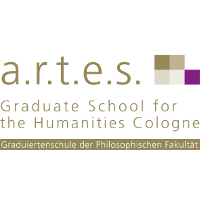Doctoral dissertation project of Tabea Thies
The influence of levodopa and deep brain stimulation on speech dynamics of patients with Parkinson’s disease (working title)
In my dissertation project, I am investigating the speech motor skills of patients with Parkinson's disease. For this purpose, I use a special recording method, the electromagnetic articulography, in which sensors are attached to the lips and the tongue to image speech movements. The overall goal is to optimize therapy options for the patients.
Parkinson's disease is a neurodegenerative disorder involving problems with motor and non-motor functions. Furthermore, the speech system gets affected which often leads to speech deficitis impacting the phonation, articulation and the respiratory system. At early stages of the disease a drug treatment with levodopa is efficient. But as the disease progresses the medication gets less effective. In advanced stages of the disease a deep brain stimulation (DBS) is another treatment option: electrodes get implanted in the patient’s brain stimulating a specific brain area. While motor symptoms, such as tremor or lack of movement, are suppressed with therapy, speech problems can occur as unwanted side effects.
My dissertation project aims to compare the speech production of patients with Parkinson’s disease in different conditions: i) before the implantation of DBS, to investigate the levodopa response on speech production; ii) after DBS implantation, to determine the influence of DBS. For capturing speech changes based on the treatments, acoustic and articulatory speech data will be analysed.
Praxis phase
I will do my praxis phase at the Department of Neurology of the University Hospital in Cologne. Within these 12 months I will collect further speech data of patients with a REM sleep behavior disorder to analyze whether speech motor deficits can already be found in those patients. Some patients with a REM sleep behavior disorder develop a Parkinson syndrome later on. Therefore, speech changes in those patients can be considered as a prodromal symptom for Parkinson’s disease and an early detection of the disease would be possible through speech analysis.
In addition, I have the opportunity to participate in testing the DBS electrodes implanted in the patient‘s brain. Each electrode can stimulate at four contact heights with different stimulation modes. Settings (amplitude, frequency) of DBS that lead to a deterioration of speech will be determined in order to subsequently make treatment recommendations. In a second step, structural brain networks associated with stimulation-induced dysarthria will be investigated. If there are distinct fibers in the brain that cause speech impairments, one can avoid stimulating them with DBS to improve treatment outcome.
My third aim is to test the applicability of a software program in clinical practice which is based on scientific speech data. The software, the "Dysarthria Analyzer", promises a quick determination of speech areas that are affected. Since almost all patients with a movement disorder can exhibit speech difficulties, I will test patients with different disorders, such as Essential Tremor, dystonia and Parkinson’s diease. If the Dysarthria Analyzer is useful, this test will be added to the regular speech therapy assessment in clinical routine.
Short biography
Tabea Thies studied Linguistics and Phonetics at the University of Cologne where she received her master’s degree in 2018. Her research is focused on pathological speech especially investigating the speech production of patients with movement disorders. While attending university, she worked as a research assistant at the Phonetics Lab of the Department of Linguistics. After finishing her masters, she worked as research associate at the Neurology Department of the University Hospital in Cologne. Currently she is a doctoral student collaborating between the Phonetics Lab and Neurology Department in Cologne.
Contact: tabea.thies(at)uni-koeln.de
Profile on the Phonetics Lab website
Publications
Hermes, A., Mücke, D., Thies, T., & Barbe, M. T., “Coordination patterns in Essential Tremor patients with Deep Brain Stimulation: Syllables with low and high complexity”, in: Laboratory Phonology: Journal of the Association for Laboratory Phonology 10, 6, 2019, pp. 1–20, DOI: http://doi.org/10.5334/labphon.141.
Thies, T., Röhr, C.T., Baumann, S. & M. Grice, “Prosodic Marking of Information Status in Picture Story Descriptions”, in: Proceedings of the Conference on Phonetics & Phonology in German-Speaking Countries, P&P 13, 28-29 Sept, HU: Berlin, 2017, pp. 193–196.
Röhr, C. T., Thies, T., Baumann, S. & M. Grice, “Prosodic Marking of Information Status in Task-Oriented Dialogues”, in: Proceedings of the Conference on Phonetics & Phonology in German-Speaking Countries, P&P 12, München, Germany, 2016, pp. 168–171.
Thies, T., Hermes, A. & D. Mücke, “Coordination Deficits in Essential Tremor Patients with Deep Brain Stimulation”, in: Proceedings of the Conference on Phonetics & Phonology in German-Speaking Countries, P&P 12, München, Germany, 2016, pp.204–206.
Awards
2016: The University of Cologne’s Faculty of Arts and Humanities Prize for the B.A. thesis titled: „Eine akustisch-artikulatorische Analyse der Sprechmotorik bei Essentiellen Tremorpatienten mit Tiefer Hirnstimulation.“
Cover photo: Human brain (Pixabay License, https://pixabay.com/de/vectors/gehirn-geist-denken-a-ich-ai-2789698/) // Portrait photo: Patric Fouad
